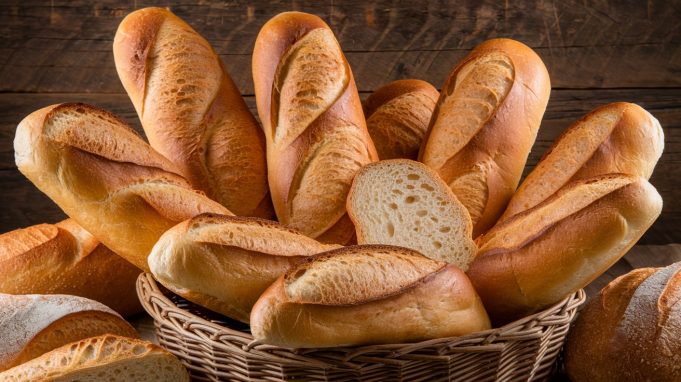Soft Fluffy French Bread Recipe (Homemade & Bakery-Style)
Few things are more comforting than the smell of fresh bread baking in the oven—especially when it’s a classic French bread that’s soft on the inside, golden on the outside, and deliciously fluffy all around. This homemade French bread recipe is everything a home baker dreams of: simple ingredients, step-by-step instructions, and results that rival your local bakery.
Whether you’re new to bread-making or a seasoned home chef, this recipe will guide you to bread success without fancy equipment or complicated techniques.
Why This Recipe Is for You
This soft and fluffy French bread recipe is ideal for:
-
Beginner bakers looking for a foolproof bread recipe
-
Families wanting a wholesome bread for sandwiches and dinner sides
-
Anyone craving that nostalgic bakery-style loaf with a soft, chewy bite
With minimal effort and maximum flavor, this bread delivers a beautiful rise and a lightly crisped crust that shines—especially if you opt for the egg wash.
What You’ll Need: Kitchen Equipment
Before you begin, gather these kitchen essentials:
-
Large mixing bowl
-
Small bowl (for yeast activation)
-
Measuring cups and spoons
-
Wooden spoon or silicone spatula
-
Stand mixer with dough hook (optional)
-
Clean kitchen towel
-
Baking sheet
-
Parchment paper
-
Sharp knife or bread lame (for scoring)
-
Pastry brush (if using egg wash)
Ingredients: Pantry Staples, Elevated
-
4 cups all-purpose flour – The sturdy foundation of your bread
-
1 packet (2 1/4 tsp) active dry yeast – Gives the bread that signature rise
-
2 tablespoons granulated sugar – Feeds the yeast and adds a gentle sweetness
-
1 1/2 teaspoons salt – Boosts overall flavor and controls fermentation
-
1 1/2 cups warm water (110°F/45°C) – Ensures yeast activation without killing it
-
2 tablespoons olive oil or melted butter – Enriches the dough with softness
-
1 egg (optional) – For brushing, adds a glossy, golden finish
Step-by-Step Instructions
Step 1: Activate the Yeast
In a small bowl, combine the warm water, granulated sugar, and active dry yeast. Stir gently and let it sit for 5–10 minutes until a frothy layer forms. This means the yeast is alive and ready to leaven the bread.
Step 2: Mix the Dough
In a large mixing bowl, whisk together the flour and salt. Pour in the frothy yeast mixture and olive oil (or butter), and stir with a wooden spoon until a rough, sticky dough forms.
Step 3: Knead the Dough
Transfer the dough to a floured surface and knead for 8–10 minutes until smooth and elastic. If using a stand mixer, attach the dough hook and knead on medium speed for 6–8 minutes.
Step 4: Let It Rise
Place the kneaded dough into a lightly greased bowl. Turn once to coat the top with oil, cover with a clean kitchen towel, and let it rise in a warm spot for 1 hour or until doubled in size.
Step 5: Shape the Bread
Punch down the risen dough to release air. Divide it in half and shape each portion into a 12-inch log. Place the loaves on a parchment-lined baking sheet.
Step 6: Final Rise
Cover the loaves with a towel and let them rise again for 30 minutes. This second rise gives the bread its tender, airy crumb.
Step 7: Bake the Bread
Preheat your oven to 375°F (190°C). For a shiny crust, brush the tops with a beaten egg. Bake for 25–30 minutes until golden brown and the loaves sound hollow when tapped.
Storage Tips
Room Temperature: Store leftovers in an airtight container or bread bag for up to 3 days. Avoid refrigeration—it can dry out the bread.
Freezing: Wrap loaves tightly in plastic wrap and foil. Freeze for up to 3 months. To thaw, leave at room temperature or warm in the oven at 300°F for 10–12 minutes.
Recipe Variations & Substitutions
-
Whole Wheat Version: Swap 1–2 cups of all-purpose flour for whole wheat flour. Add an extra tablespoon of water if needed.
-
Garlic Herb Bread: Add 1 teaspoon garlic powder and 1 tablespoon chopped herbs (rosemary, thyme, or oregano) to the dough.
-
Cheesy Twist: Add 1/2 cup shredded cheddar or parmesan to the dough before kneading.
Serving Suggestions & Pairings
-
Breakfast: Toast slices with butter, jam, or avocado.
-
Lunch: Use for sandwiches or paninis.
-
Dinner: Serve with soup (French onion, tomato basil) or pasta dishes.
-
Drinks: Pairs well with red wines like Merlot or a crisp white like Sauvignon Blanc. For a non-alcoholic option, try sparkling water with lemon or herbal iced tea.
Frequently Asked Questions
Can I use instant yeast instead of active dry yeast?
Yes! Use the same amount, and skip the activation step. Add it directly to the dry ingredients.
How do I get that perfect crispy crust?
Place a pan of hot water on the bottom rack of your oven while baking. The steam will create a crusty exterior.
Why didn’t my bread rise?
Check the yeast expiration date. Also ensure the water wasn’t too hot, which can kill the yeast.
Can I make this dough ahead of time?
Yes. After kneading, cover and refrigerate the dough for up to 24 hours. Bring it to room temperature before shaping and baking.
Final Thoughts
Baking your own soft and fluffy French bread is more than just a recipe—it’s a rewarding kitchen experience that brings warmth and nourishment to your table. With a crisp, golden crust and cloud-like interior, this bread is bound to become a staple in your home.
If you loved this recipe, please share it with your fellow home bakers and subscribe to the blog for more delicious, fail-proof recipes straight from my kitchen to yours. Happy baking!









